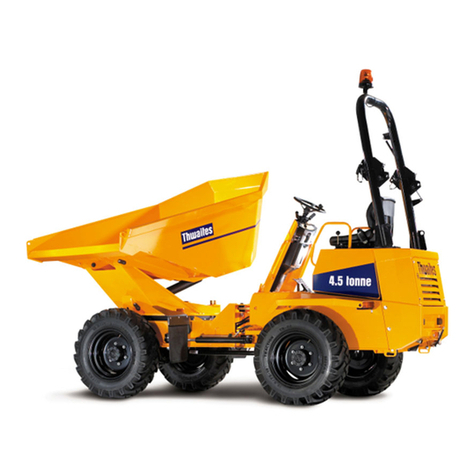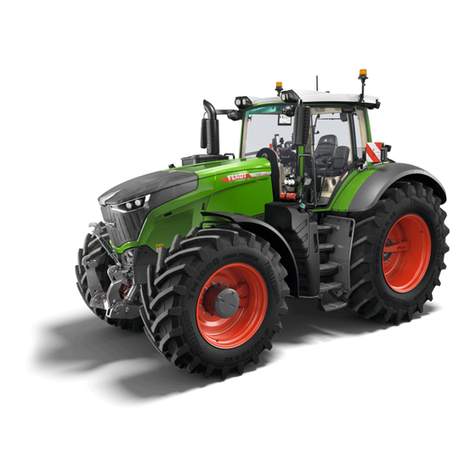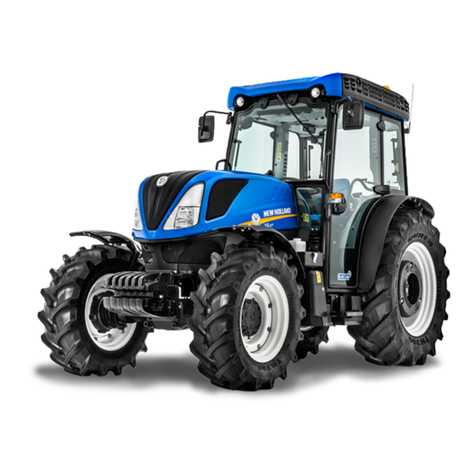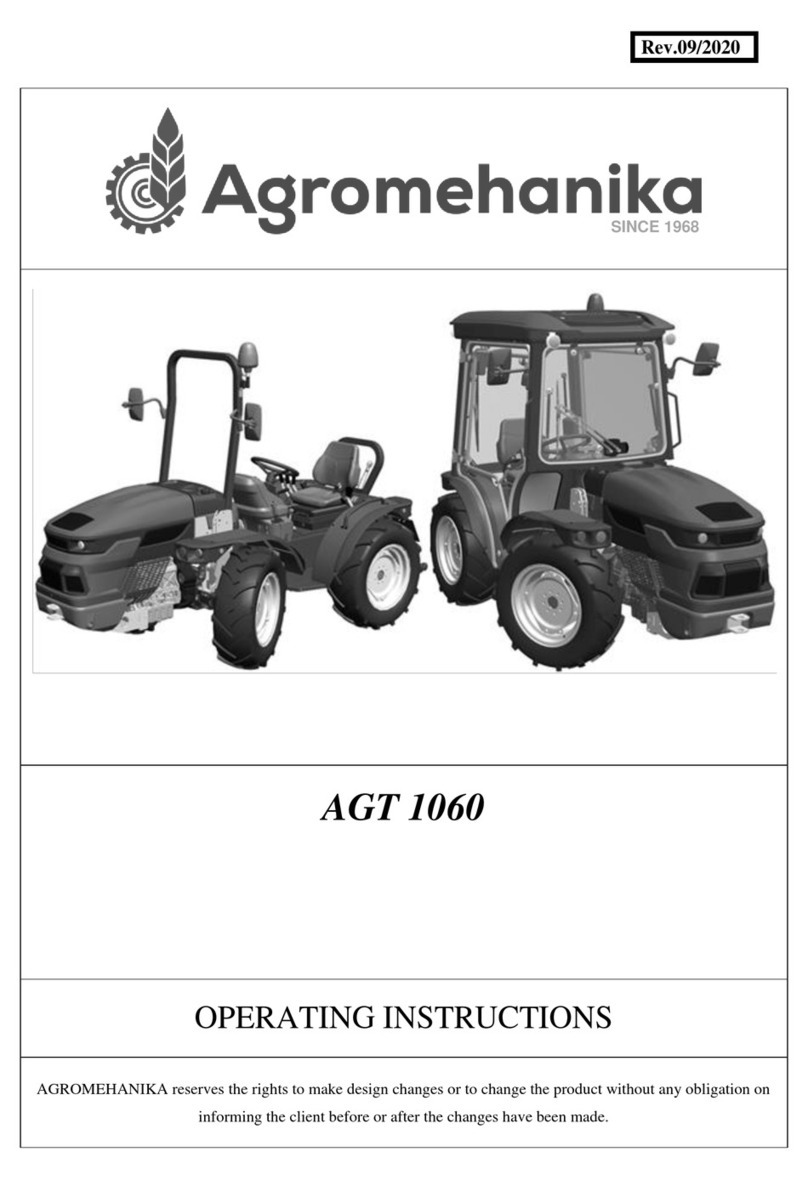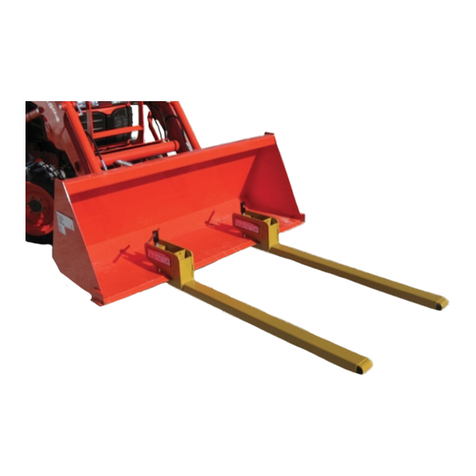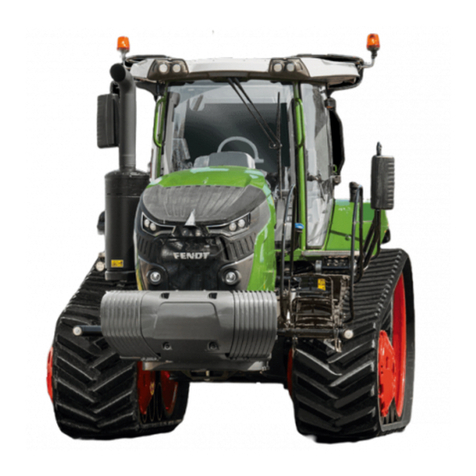Thwaites MACH 2071 2022 Assembly instructions

MACH 2071, 2076,
2077, 2080, 2081. Operator’s
Instruction
Manual
2.0 - 3.0 Tonne (hydrostatic)
Mach 2077 - 2.3 Tonne Powerswivel Mach 2071 - 2.0 Tonne Hi Swivel
Thwaites Limited
T0607 Version 3

Introduction
Signal words:
Signal words are used on the machine and within this manual to identify levels of hazard seriousness
DANGER WARNING CAUTION
Safety Symbols
• Attention!
• Become Alert!
• Your safety is involved
• Correct action • Incorrect action/procedure
which should NOT be carried
out
Thwaites Limited puts Safety First
It is the policy of Thwaites Limited to promote safety in the
operation of its machines and to create a general awareness of
site safety and safe working practices for the operators of its
machines.
This Operator’s Instruction Manual is intended for both new
and experienced machine operators. It should remain with
the machine at all times. All operators should be aware of its
location and contents.
It is important that all operators are fully trained and familiar
with the machine and that they have read and understood the
information contained within this book before they attempt
to operate in the site conditions for which the machine was
designed.
This book details practices and operations which Thwaites
Limited recommends. DO NOT operate this machine in ways
other than those detailed within this book.
This machine is designed for customary construction site
operations, and the transportation of bulk materials commonly
carried on such sites; that is their ‘intended use’. Under certain
controlled conditions the dumper may be used for towing
wheeled loads.
Due to the varied nature of the operation of site dumpers and
the absence of an agreed test standard, any gures quoted
by Thwaites in relation to vibration values and exposure are
for reference purposes only. It is the responsibility of the
employer to assess vibration exposure based on the actual site
conditions, and operating practices, at the point of use.
Hand Arm Vibration - The daily exposure Action/Limit Values
of between 2.5 - 5.0m/s2 (A8) are unlikely to be exceeded in an
eight-hour reference period.
Whole Body Vibration - The daily exposure can only be
accurately determined at the point of use. This exposure must
be managed in respect of the Action/Limit Values of 0.5 and
1.15 m/s2 (A8) respectively.
Employers should not rely solely on published vibration
gures when undertaking risk assessments. Depending on the
site conditions, cycle times may need to be adjusted in order
to reduce operator exposure levels.
Vibration values based on typical duty cycles are available
on request from Thwaites. These may be used for reference
purposes only.

1
Complete checks in section before starting the engine
Before operating this machine
1 Contact your Thwaites dealer in case of further
questions
2 Learn to operate this machine
3 Ensure that you are t to operate
4 Wear correct safety clothing and ensure that safety
equipment is available
Distributor
Read this operator’s instruction manual

1
514
1
51
61
61
20% max 25%max25% max 16% max
20% max 16% max
4
1
25% max
A
B C
D
E
G
F
J
K
L
M
N
P
R
S
514
1
51
20% max 25% max25% max
20% max
4
1
25% max
51
20% max
51
20% max
H
Complete checks in section before starting the engine
Safety label identication

1
Complete checks in section before starting the engine
Item Description Qty
AGradient Front Tip - Read the operator's manual
before working on gradients 1
BStability hazard - Do not discharge load when
working on sloping ground 1
CGradient Powerswivel - Read the operator's manual
before working on gradients 1
DWarning roll over protective structure (ROPS) -
Never modify structure 1
EWarning - Read the operator's manual before towing
a trailer 1
FWarning lift point - Read the operator’s manual
before lifting the machine 1
GCrushing of whole body - Never work under an
unpropped skip 1
HCrushing of whole body - Never work under an
unlocked scissor frame (Hi swivel model) 1
Safety labels
The safety labels tted to these machines are to warn the operator or bystanders of possible hazards.
• Be sure you fully understand the content and position of the labels.
• Ensure labels are clean and in good condition, do not clean labels with solvents.
• Replace lost or damaged safety labels.
There are also other labels in addition to the safety labels, handle these labels in the same way.
Orientation of labels may vary from those shown.
Item Description Qty
JCrushing of whole body - Stay a safe distance from
articulation area 2
KWarning - Read the operator’s manual before you
operate the machine 1
LCrushing hazard due to machine roll over - Always
wear seat belt 1
MWarning engine maintenance - Read the service
manual before working on the machine 1
N
Warning severing of nger or hand - Keep hands a
safe distance from rotating parts (under engine cover)
1
PElectrical shock - Do not use pressure washer on
electrical items (under engine cover) 1
RHot surface - Keep hands a safe distance from hazard
(under engine cover) 1
SWarning hot fluid under pressure - Read the
operator's manual (under engine cover) 1
Safety label identication

1
Complete checks in section before starting the engine
Walk around the machine
DO NOT OPERATE THE MACHINE UNTIL
ALL FAULTS HAVE BEEN RECTIFIED
Before operating this machine
Visually check the machine
1 Are the chassis lock and the skip lock disengaged?
2 Are the controls, crush zone or hydraulic rams
clean, and clear of any debris?
3 Is the Roll-Over Protective frame (ROPS frame)
secure, fully upright and undamaged?
4 Is the seatbelt anchorage secure and serviceable?
5 Are the covers and mudguards secure?
6 Are the hoses free from uid leaks?
7 Are all safety decals legible?
8 Are the tyres free of cuts or splits?
9 Are all bolts tight and in position?
10. Are the steering wheel and the steering column
undamaged?
11 Have the daily maintenance tasks been
performed? (See section 5)
Report all faults immediately.

1
Complete checks in section before starting the engine
Seatbelt MUST BE WORN when operating machines
tted with ROPS frame.
Mount the machine and check the controls
1 Use the grabrails and foot steps provided to
manoevre into seating position. Face the machine
at all times when mounting and dismounting
2 Is the engine cover secure and locked?
3 Adjust the seat position for comfort and easy
access to controls
4 Fasten the seatbelt. Adjust accordingly for safety
and comfort
5 Is the hand brake ON?
6 Set the transmission to neutral
7 Does the foot brake feel rm?
8 Do not operate the machine without understanding
all its controls as described in the following pages
Before operating this machine
WARNING

1
1
2 & 3
4
5
6
7
9
10
8
1112
13
17
16
15
14
18
Complete checks in section before starting the engine
Control location & functions
1. Steering wheel
2. Direction indicator selector -
forward = left turn - back = right turn*
3. Lights - twist 1 = sidelights ON
twist 2 = headlights ON*
4. Hazard warning light switch*
5. Foot brake pedal
6. Throttle pedal
7. Hand brake lever
8. Engine oil pressure warning light
9. Water temperature warning light
10. Direction indicator pilot light*
11. Heat/start pilot light
12. Battery charging warning light
13. Horn push
14. Raise-skip lever (hi swivel model only)
15. Tip-skip lever (Fwd tip model)
Tip-skip and rotate-skip lever
(powerswivel and hi swivel models)
16. Ignition & hand brake warning buzzer
17. Ignition switch
18. Forward/Neutral/Reverse (FNR) lever
* Optional items
Layout of controls

1
Complete checks in section before starting the engine
1 Maxi fuse
2 Isolater switch
3 Hour meter
CB1 Transmission
CB2 Power
CB3 Lights* / Becon / Horn
CB4 Hazard* / Lights*
CB5 LH side lights*
CB6 RH side lights*
* Optional items
Layout of battery

1
Complete checks in section before starting the engine
Adjusting the seat belt
•Adjust length of belt when seated on the machine
• Press buckle blade into buckle lock
• Pull belt webbing through buckle blade to remove slack
Seatbelt should not be worn loose. It should pass comfortably across hip
bones and not the abdomen.
Control functions – explained
Seat adjustment
A – Turn knob to set driver weight
B – Lift to slide seat assembly forwards/backwards
C – Lift handle to adjust backrest

1
Complete checks in section before starting the engine
Rotate-skip lever (swivel models)
• Raise skip 100 mm (4”) to disengage pivot centring lock
Rotate skip, fully lowered, to automatically engage centring lock
• Raise skip and push lever to the right to rotate skip to right
• Raise bucket and push lever to the left to rotate skip to left
• Push forward to tip skip
• Push backwards to return skip
• Increased engine speed reduces cycle times
Movement of the skip is disabled if the steering wheel is moved
(Priority Steering)
Raise-skip lever (Hi swivel model only)
• Push forward to raise skip
• Push backwards to lower skip
Tip-skip lever (forward tip model)
• Push forward to tip skip
• Push backwards to return skip
Control functions – explained

1
Complete checks in section before starting the engine
Control function – explained
Engine cover open/close
• Insert ignition key and turn anti-clockwise to unlock
• Pull handle to release and raise cover
• Lower cover, secure and lock before driving
FNR lever
• Push forwards to travel in a forward direction
• Lever centred = neutral
• Pull back to travel in a reverse direction
• Twist lever anti-clockwise for HIGH-speed travel
• Twist lever clockwise for LOW-speed travel
If green beacon option is fitted seat belt must be buckled for lever to
function
Hand brake lever - right hand
• Use only when the machine is stationary (or in an emergency)
• Pull lever back to apply, lift collar pull back and releace collar to lock.
• Lift collar and lever will move forward to release.
An audible warning device is fitted to your machine. This will sound if the
parking brake is engaged whilst forward or reverse is selected and machine
will not move.
Engine will not start if parking brake is not engaged.

1
Complete checks in section before starting the engine
Steering wheel
• Turn the wheel clockwise to turn machine to right
• Turn the wheel anticlockwise to turn machine to left
Ensure the non-steering hand is on the engine cover grabrail when using the
spinner knob for low-speed single-handed steering
Control functions – explained
Throttle pedal – right foot
• Apply pressure to increase speed
• Reduce pressure from the pedal to reduce speed
Foot brake pedal + inching pedal – right foot
• Apply pressure to slow or stop the machine
Use left foot when inching is required:
Push down while pressing throttle pedal with right foot and release to move
machine

1
Complete checks in section before starting the engine
Control functions – explained
Beacon stowage
• Unscrew and remove beacons
• Secure beacons on brackets provided beneath bonnet
Battery isolator (beneath engine cover)
• Turn key anti-clockwise to isolate the battery power supply
Raising and Lowering the folding ROPS frame
• Remove linch pins and withdraw frame lock pins
• Lower frame and insert lock pins and linch pins in new position
• Reverse the procedure to raise the frame
• Ensure all pins are secure before driving
Tip-skip lever lock (optional)
• Place yolk over tip-skip lever and secure with linch pin

2
Complete checks in section before loading the machine
To start the engine
• Apply hand brake
• Set FNR lever to neutral
• Cold start aid (when required)-
Turn key to position ‘H’. When panel light extinguishes
start engine (as above).
• Turn the key clockwise to the start position ‘S’
All panel lights self-test (illuminate) and should extinguish
on start-up.
• Allow the engine to turn for 15 seconds max.
If the engine does not start within 15 seconds, return key
to position ‘O’ and wait 30 seconds before turning to ‘S’
again.
• When the engine res, release key.
(The key will spring back to ‘Run’ position ‘R’).
To Stop The Engine
• Turn key to position ‘O’.
How to START and STOP the engine
CAUTION
• Do not use unauthorised starting aids.
• Do not TOW or BUMP start.
WARNING
DO NOT START THE ENGINE UNLESS SEATED IN
THE DRIVING POSITION
CAUTION
If a panel light remains ON switch off engine (key to
‘O’) and investigate problem.

2
Complete checks in section before loading the machine
Preliminary checks
Function checks - engine ON
Brakes
• Does the foot brake pedal feel rm?
• If the hand brake is on, and a gear is selected, a buzzer
will sound and the drive may be disconnected.
Steering
• Rotate steering wheel clockwise and anti-clockwise
Electrics
• Does the horn sound correctly?
• Does the reverse alarm sound correctly?
• Are the beacons ashing?
• Are the lamps working correctly? (optional) –
* Side lights
* Head lights
* Stop
* Indicators
* Hazards
Tip-skip lever/Rotate-skip lever
• Discharge/park skip
• Rotate - right to left/Left to Right. (powerswivel and hi
swivel models).
Raise-skip lever
• Raise/Lower bucket. (Hi swivel model only)

2
Complete checks in section before loading the machine
Moving from rest and stopping
If green beacon option is fitted seat belt must be buckled.
• Select forward or reverse
• Select low gear
• Release hand brake fully
• Slowly depress accelerator to move away
• Hold steering wheel with both hands
• Remove foot from accelerator pedal
• Brake gently to a halt using foot brake
• Apply hand brake
Changing speed/direction
• Select high gear
• Before changing direction (forward/reverse), stop the
machine and engage the hand brake
After operating – park safely
• Always leave skip empty when not in use
• Ensure machine is on rm, level ground
• Apply hand brake
• Using the FNR lever, select neutral
• Hydraulic system at rest in a safe condition
• Stop engine and remove key
• Lock engine cover
Driving procedure and parking safely
• Novice operators should always start with forward
motion on clear, level ground
• A low gear should always be selected if a driver is
unfamiliar with machine type
CAUTION

3DANGER IMMEDIATE HAZARDS WHICH WILL RESULT IN SEVERE PERSONAL
INJURY OR DEATH
3
Attention! Section correct and incorrect working practices
Forward Tip
Swivel Skip WORKING ON GRADIENTS
DO NOT exceed maximum stated gradients
Always position swivel-skip in central lock
DO NOT turn across gradients
DO NOT brake suddenly in wet, muddy, icy conditions or when
operating on loose surfaces
DO NOT run downhill with controls in neutral
Travel straight up, down or along a gradient
Keep speed to a minimum and use the foot brake to reduce speed
when travelling down gradients
To prevent movement, always engage hand brake when stopped on
sloping ground. Chock wheels securely when leaving the machine
unattended
DO NOT operate skip-raise lever (Hi swivel model) on sloping
ground. Check indicator

3
3DANGER IMMEDIATE HAZARDS WHICH WILL RESULT IN SEVERE PERSONAL
INJURY OR DEATH
Attention! Section correct and incorrect working practices
CRUSH ZONE
Stay clear of articulation area when the engine is running
Never operate machine controls when standing on either side
of machine
WORKING UNDER A RAISED SKIP
Lock skip safety prop during maintenance
When using skip safety prop engage tip-skip lever lock
(if tted)
Never work under an unpropped skip

3
Mach 2071
1m
1m
1m
1m
1m
1m
1.2m
5.6m 0.45m
DANGER IMMEDIATE HAZARDS WHICH WILL RESULT IN SEVERE PERSONAL
INJURY OR DEATH
3
Attention! Section correct and incorrect working practices
VISIBILITY
The visibility maps show machines in standard build and travel
conguration.
The maps provide an approximate indication of what can be seen
by the operator and any blind spots when seated in the driving
position wearing a seatbelt.
The maps have been provided to assist the operator / user and
may be used as part of a risk assessment for the safe operation of
the machine.
The machines are compliant with the visibility requirement given
in EN 474-1 with regards to the rectangular boundary and a test
object of 1.2m high and 0.3m wide and the 12m circular boundary.
• Check all around the machine before operation.
• Be sure all mirrors are adjusted before operating the machine
(if tted).
• All cameras and mirrors must be kept clean (if tted).
• Be aware of all blind spots.
The blind spot areas marked on the plan views of these maps are
ground plane only
WARNING
Camera angles are factory set, any modications to the machine
conguration by any end user that my result in the restriction of
visibility and will require a new risk assessment to be performed. Operators eld of vision
Blind spots
This manual suits for next models
4
Table of contents
Other Thwaites Tractor manuals
Popular Tractor manuals by other brands
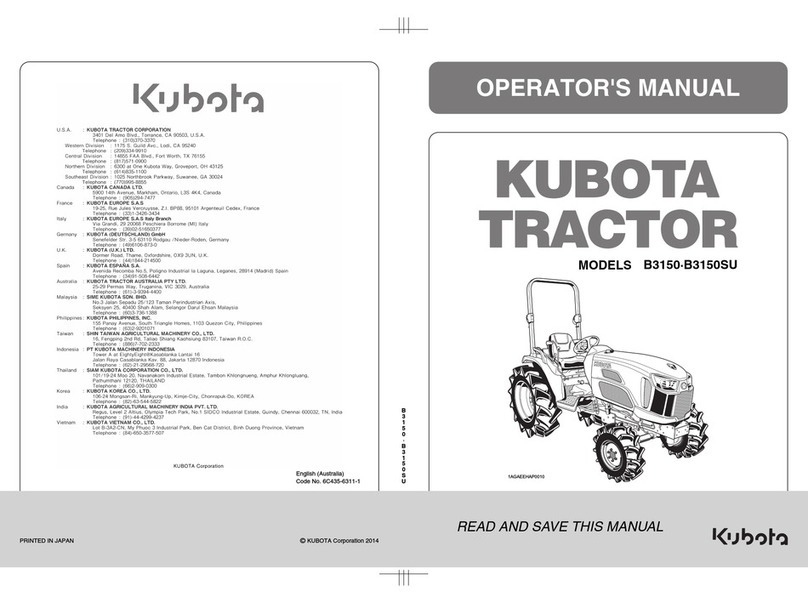
Kubota
Kubota B3150 Operator's manual
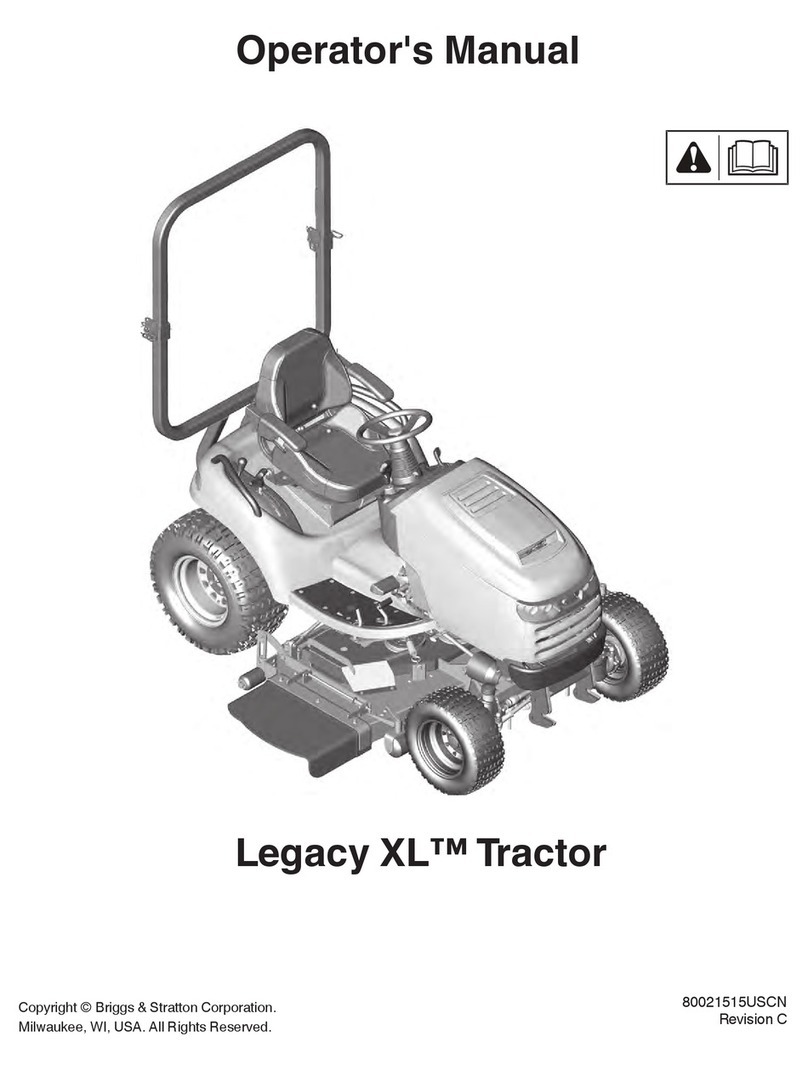
Briggs & Stratton
Briggs & Stratton Legacy XL Operator's manual

Lincoln Electric
Lincoln Electric ROVER Operator's manual

McCulloch
McCulloch M110-77TC CLASSIC instruction manual

Toro
Toro wheel horse 268H Operator's manual
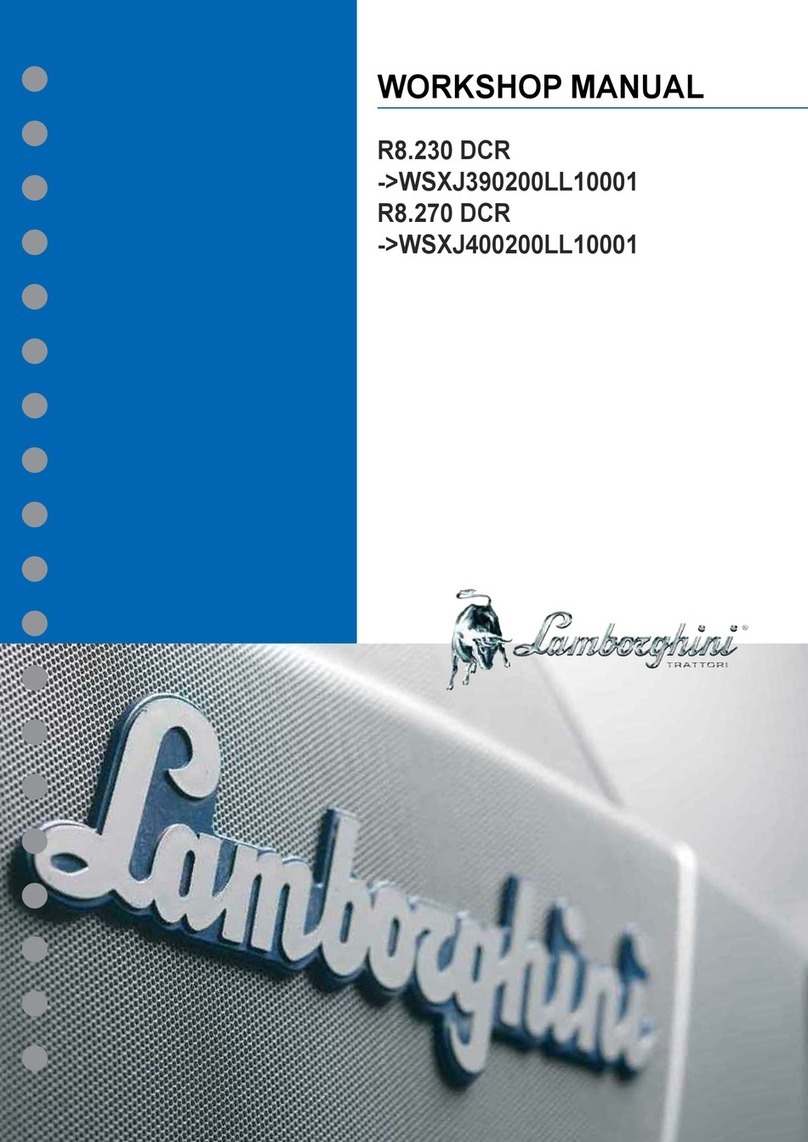
LAMBORGHINI
LAMBORGHINI R8.230 DCR Workshop manual

